Related Research Articles
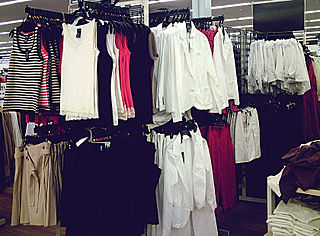
Ready-to-wear (RTW) – also called prêt-à-porter, or off-the-rack or off-the-peg in casual use – is the term for garments sold in finished condition in standardized sizes, as distinct from made-to-measure or bespoke clothing tailored to a particular person's frame. In other words, it is a piece of clothing that was mass produced in different sizes and sold that way instead of it being designed and sewn for one person. The term off-the-peg is sometimes used for items other than clothing, such as handbags. It is the opposite of haute couture.
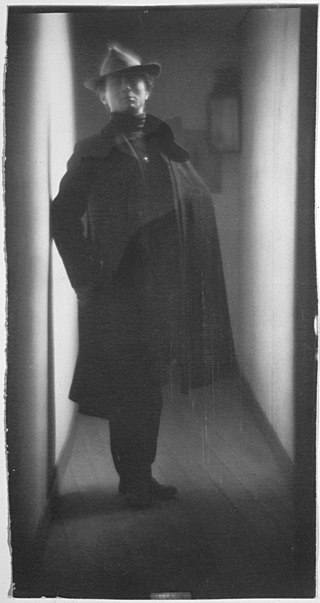
Edward Jean Steichen was a Luxembourgish American photographer, painter, and curator, renowned as one of the most prolific and influential figures in the history of photography.
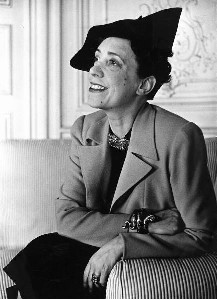
Elsa Schiaparelli was an Italian fashion designer from an aristocratic background. She created the house of Schiaparelli in Paris in 1927, which she managed from the 1930s to the 1950s. Starting with knitwear, Schiaparelli's designs celebrated Surrealism and eccentric fashions. Her collections were famous for unconventional and artistic themes like the human body, insects, or trompe-l'œil, and for the use of bright colors like her "shocking pink".

Jacques Henri Lartigue was a French photographer and painter, known for his photographs of automobile races, planes and female Parisian fashion models.
Irving Penn was an American photographer known for his fashion photography, portraits, and still lifes. Penn's career included work at Vogue magazine, and independent advertising work for clients including Issey Miyake and Clinique. His work has been exhibited internationally and continues to inform the art of photography.
Givenchy is a French luxury fashion and perfume house. It hosts the brand of haute couture and ready-to-wear clothing, accessories, perfumes and cosmetics of Parfums Givenchy. The house of Givenchy was founded in 1952 by designer Hubert de Givenchy and is a member of Chambre Syndicale de la Haute Couture et du Prêt-à-Porter. It is currently owned by luxury conglomerate LVMH.

Fashion photography is a genre of photography that portrays clothing and other fashion items. This sometimes includes haute couture garments. It typically consists of a fashion photographer taking pictures of a dressed model in a photographic studio or an outside setting. It originated from the clothing and fashion industries, and while some fashion photography has been elevated as art, it is still primarily used commercially for clothing, perfumes and beauty products.
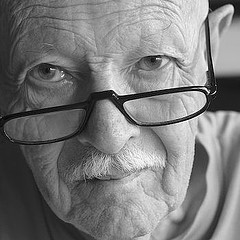
Willy Ronis was a French photographer. His best-known work shows life in post-war Paris and Provence.

The robe à la polonaise or polonaise is a woman's garment of the later 1770s and 1780s or a similar revival style of the 1870s inspired by Polish national costume, consisting of a gown with a cutaway, draped and swagged overskirt, worn over an underskirt or petticoat. From the late 19th century, the term polonaise also described a fitted overdress which extended into long panels over the underskirt, but was not necessarily draped or swagged.

Paris Fashion Week is a series of designer presentations held semi-annually in Paris, France, with spring/summer and autumn/winter events held each year. Dates are determined by the Fédération de la Haute Couture et de la Mode. Paris Fashion Week is held at venues throughout the city.

Vogue France is the French edition of Vogue magazine, formerly called Vogue Paris from its inception until 2021. The magazine started publication in 1920 and has since been regarded as one of the top fashion publications.
Paul Deneve is a Belgium business executive and former vice president at Apple from 2013 to 2017. He is the former chief executive of Yves Saint Laurent (YSL), a subsidiary of Kering. Between 1997 and 2013, he managed a number of companies in the luxury sector, including Courreges, Nina Ricci, Lanvin and YSL.
Frank Horvat was an Italian photographer who lived and worked in France. He is best known for his fashion photography, published between the mid 1950s and the late 1980s. Horvat's photographic opus includes photojournalism, portraiture, landscape, nature, and sculpture. He was the recipient of the Fondazione del Centenario Award in 2010 for his contributions to European culture.
Émile Savitry (1903–1967) was a French photographer and painter.

Philippe Robert is a French photographer. His work includes portraits, fashion, and advertising photos.
Milan Vukmirovic is currently Editor-in-Chief and Founder of FASHION FOR MEN bookmazine and Menswear Creative Director of Ports 1961, since 2015.
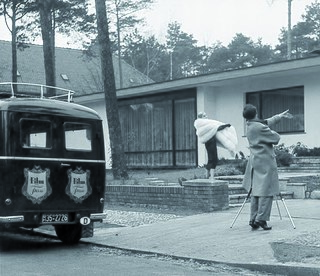
Franz Christian Gundlach was a German photographer, gallery owner, collector, curator and founder.

Virginie Viard is a French fashion designer who has been the creative director of Chanel since 2019.

The Séeberger family, known as the Frères Séeberger; three brothers Jules (1872–1932), Henri (1876–1956) and Louis' (1874-1946), sons Jean (1910–1979) and Albert (1914–1999) were a French fashion photography family active during the 20th century.

Paul René Baschet was a French journalist; best known as the Director of L'Illustration.
References
- 1 2 3 G. S. Smith; C. M. Macrobert; G. C. Stone (1997). Oxford Slavonic Papers. Oxford University Press. p. 110. ISBN 978-0-19-815954-4 . Retrieved 5 April 2015.
- ↑ Véronique Pouillard (2013). "Fashion for all?". Journalism Studies. 14 (5): 716–729. doi:10.1080/1461670X.2013.810907.
- ↑ Danielle Leenaerts, Petite Histoire Du Magazine Vu (1928-1940) : Entre Photographie D'information Et Photographie D'art, Peter Lang, 2010, 403 pages, p. 20 ( ISBN 9789052015859)
- ↑ Frédéric Godart (27 March 2012). Unveiling Fashion: Business, Culture, and Identity in the Most Glamorous Industry. Palgrave Macmillan. p. 112. ISBN 978-1-137-00074-3 . Retrieved 5 April 2015.